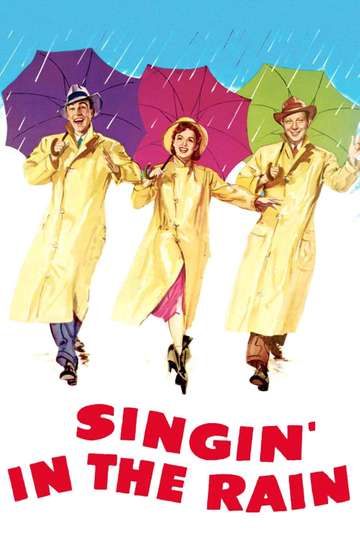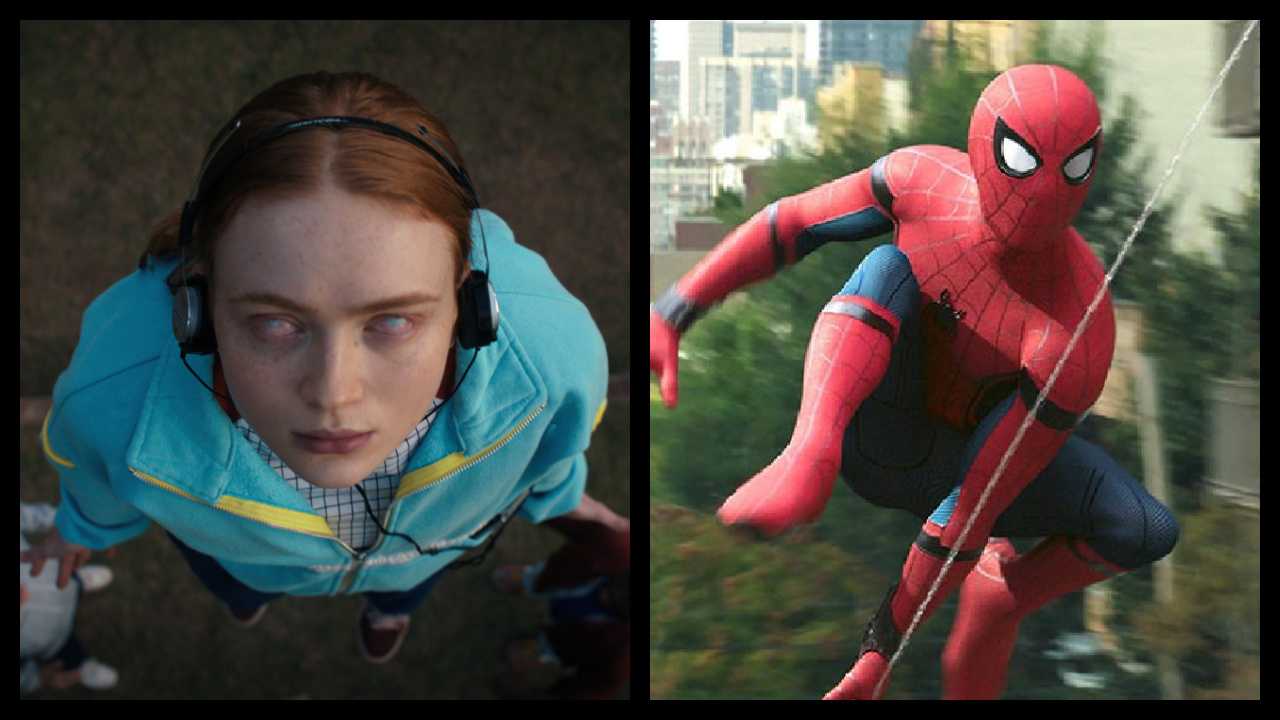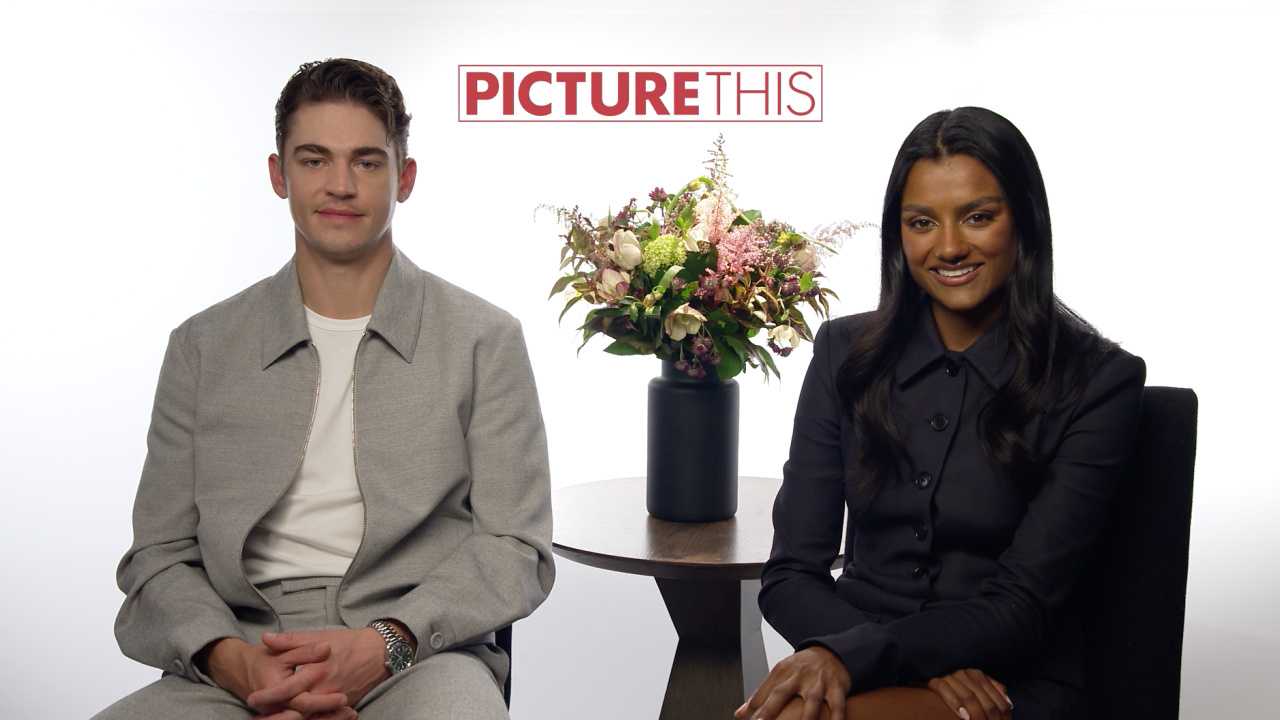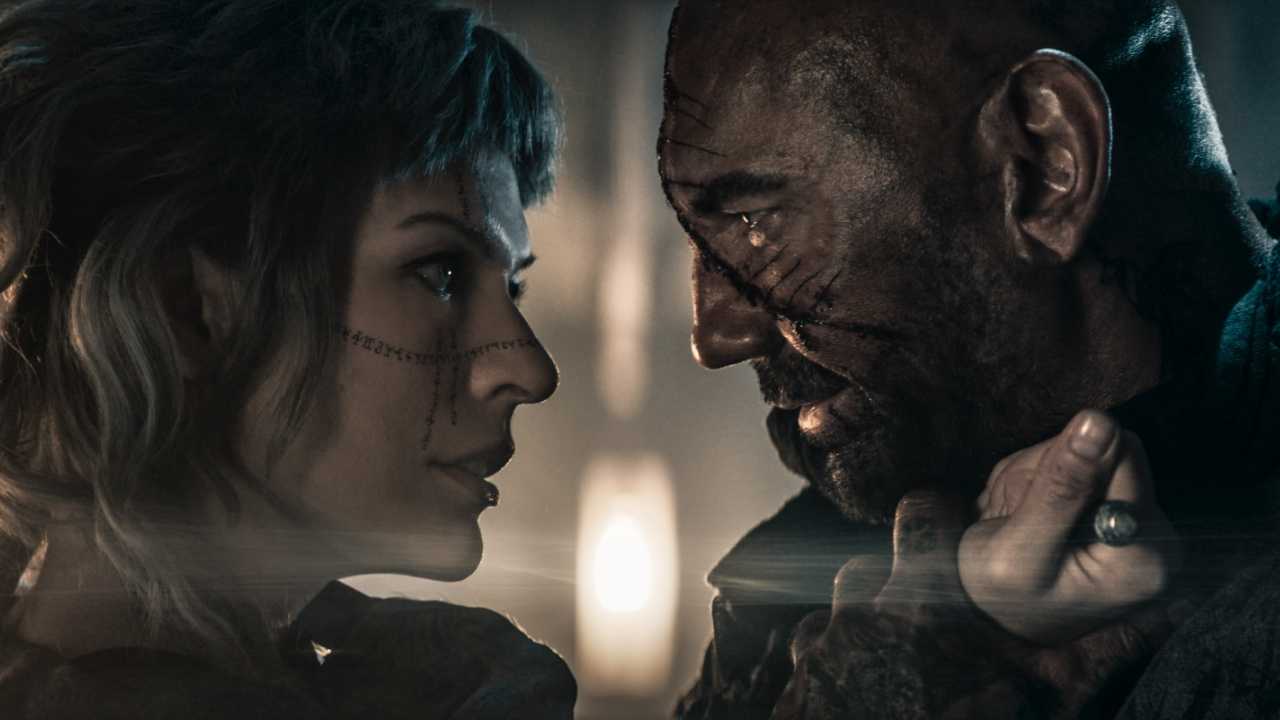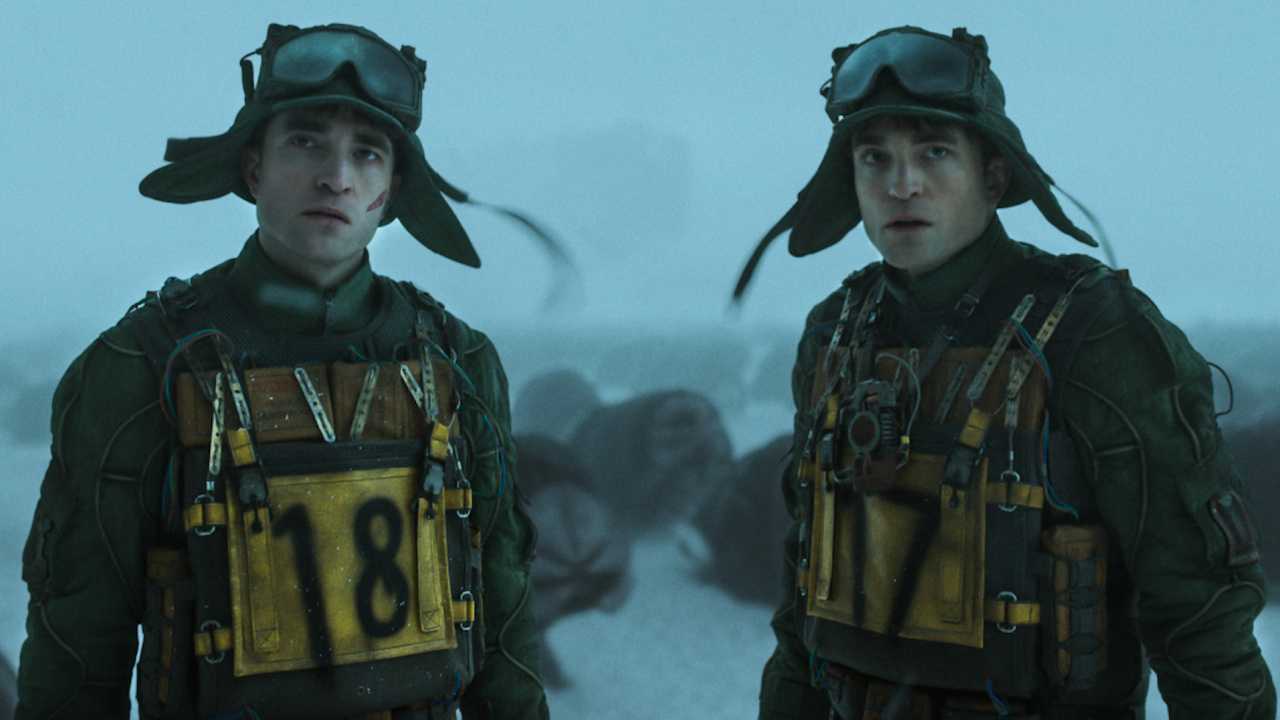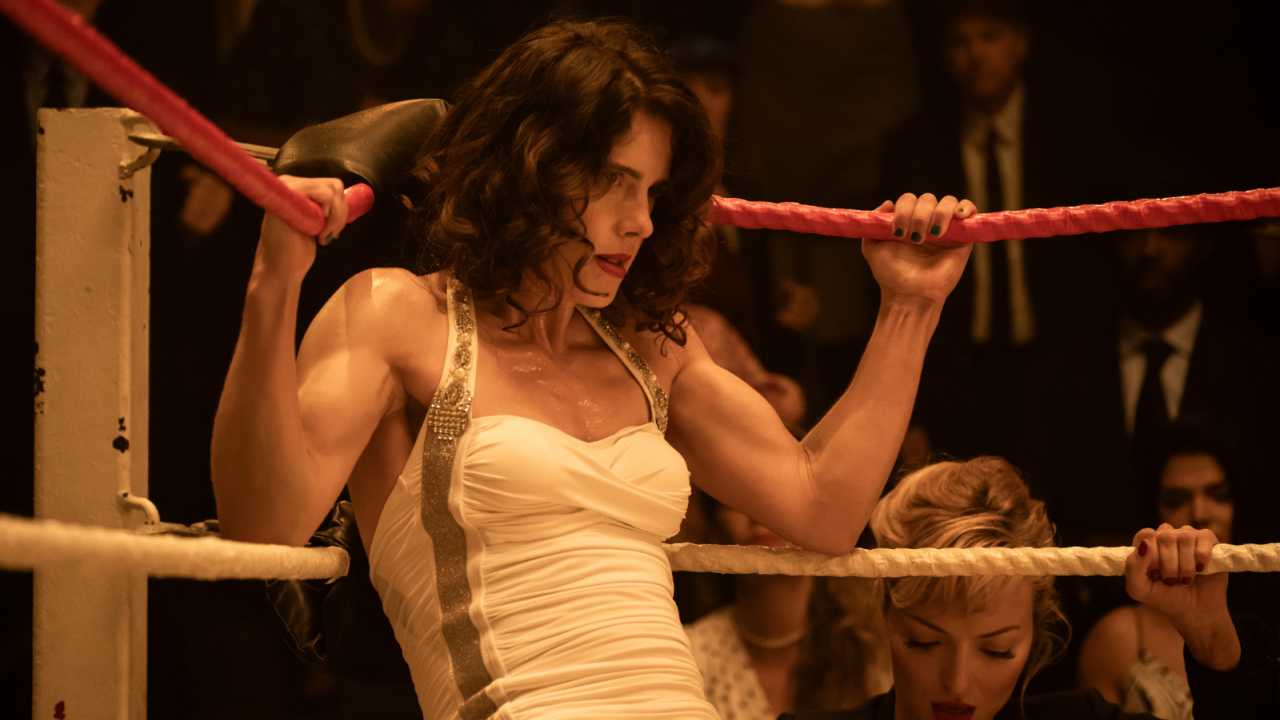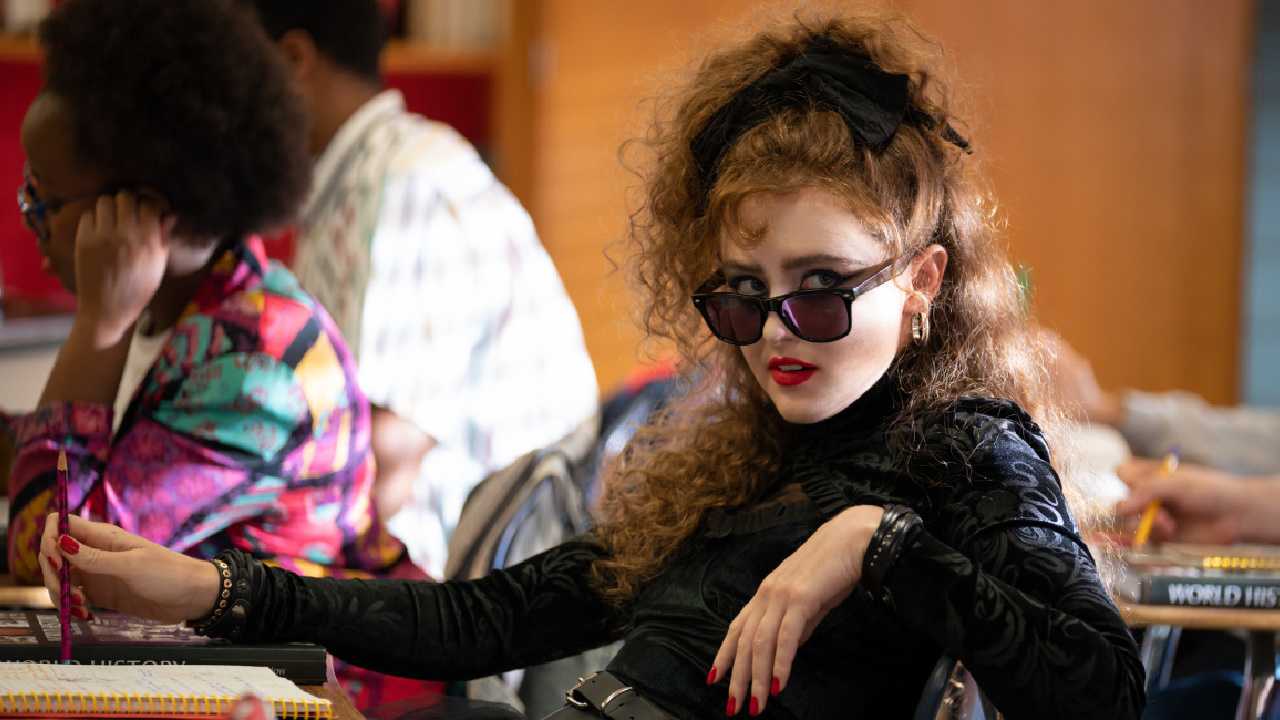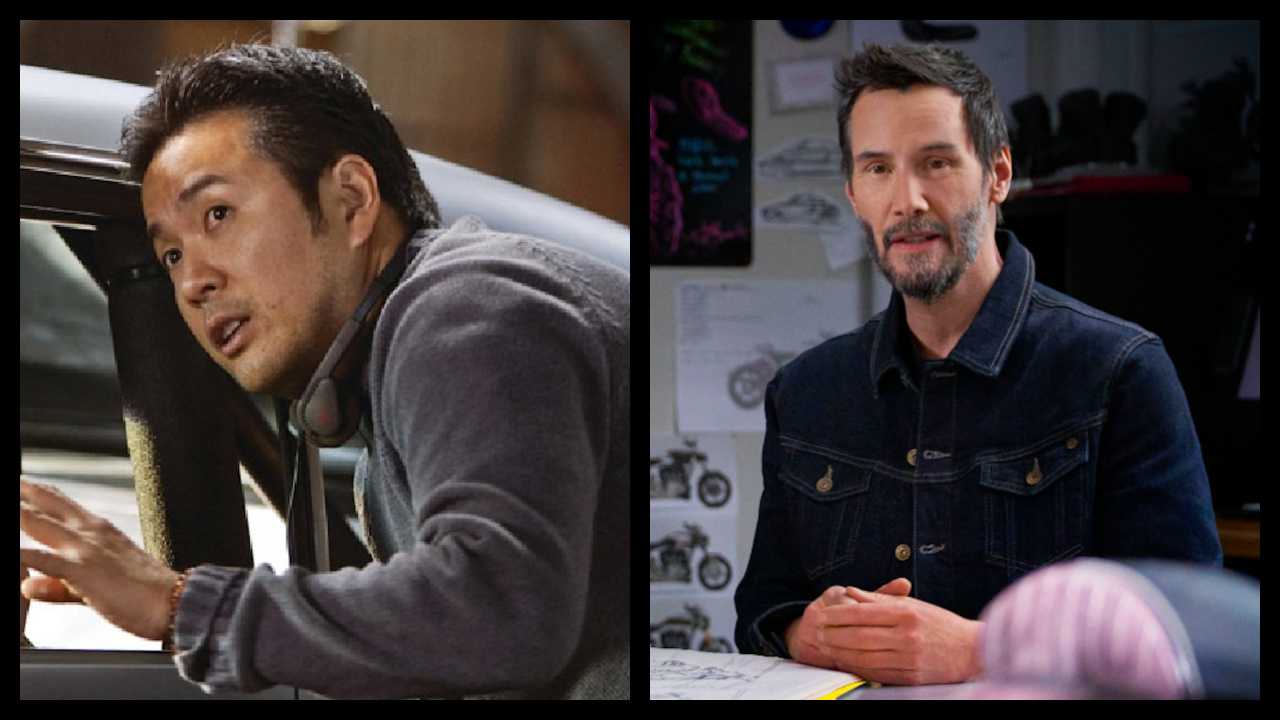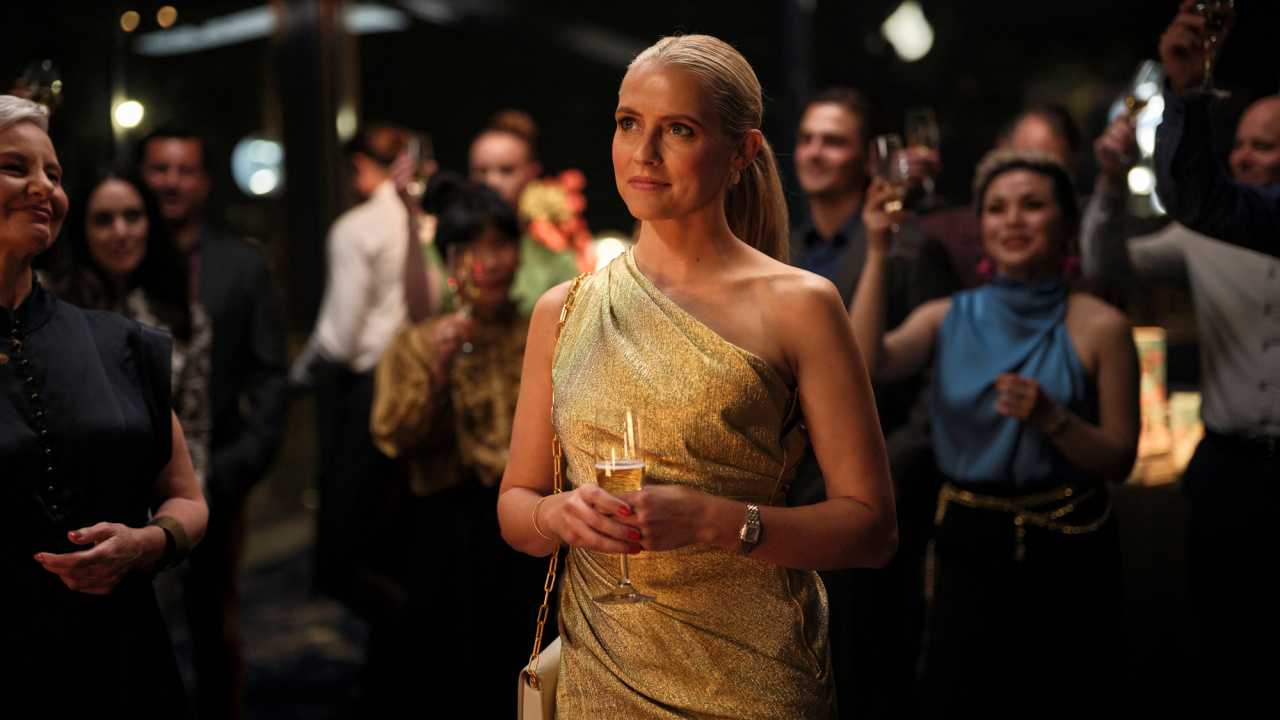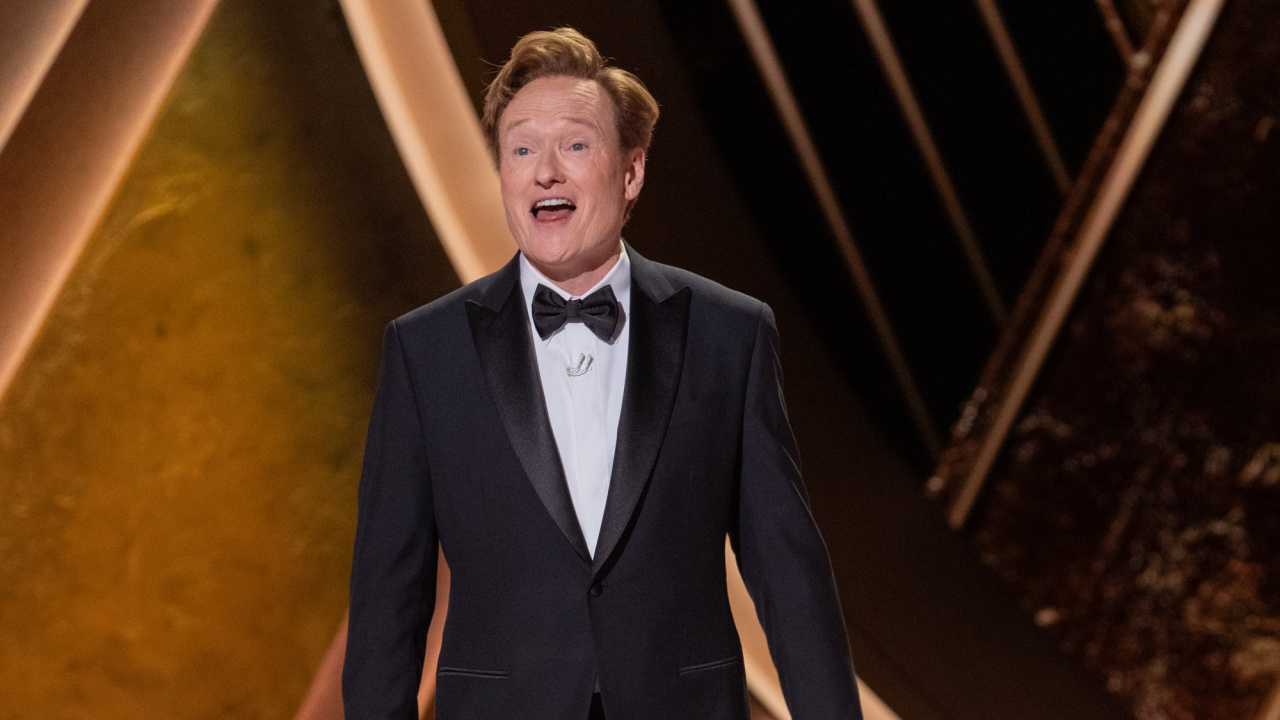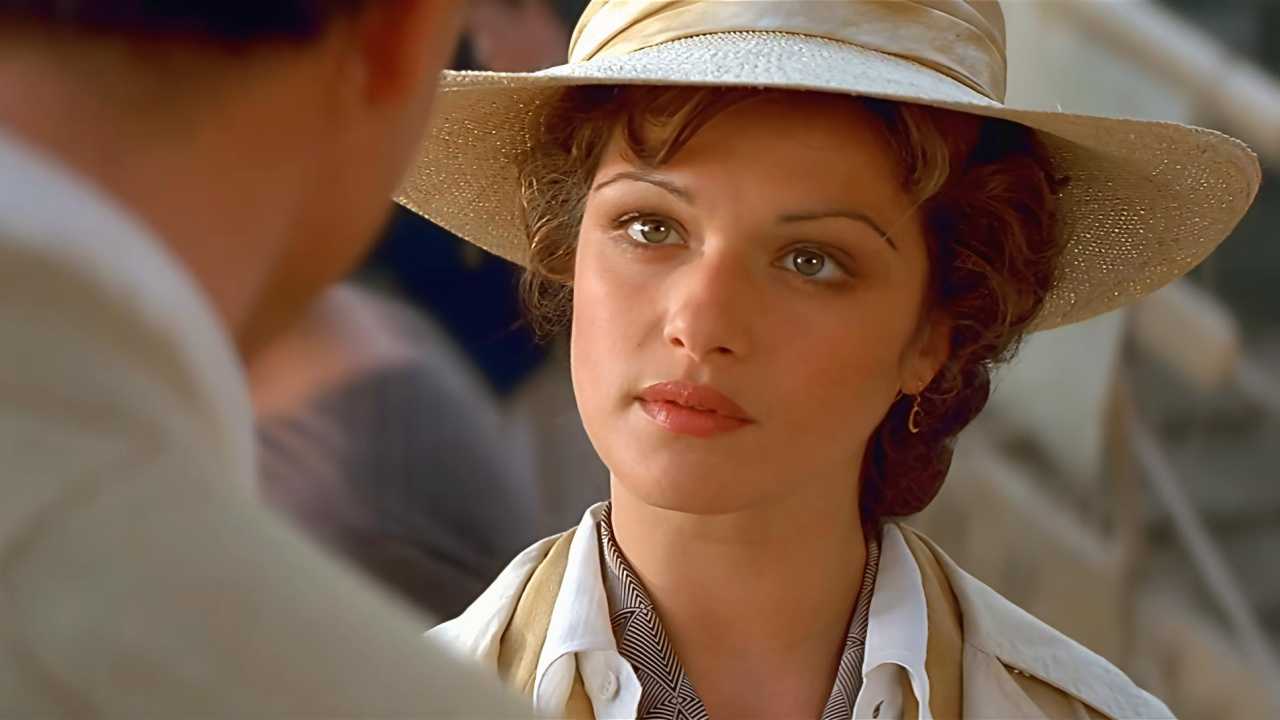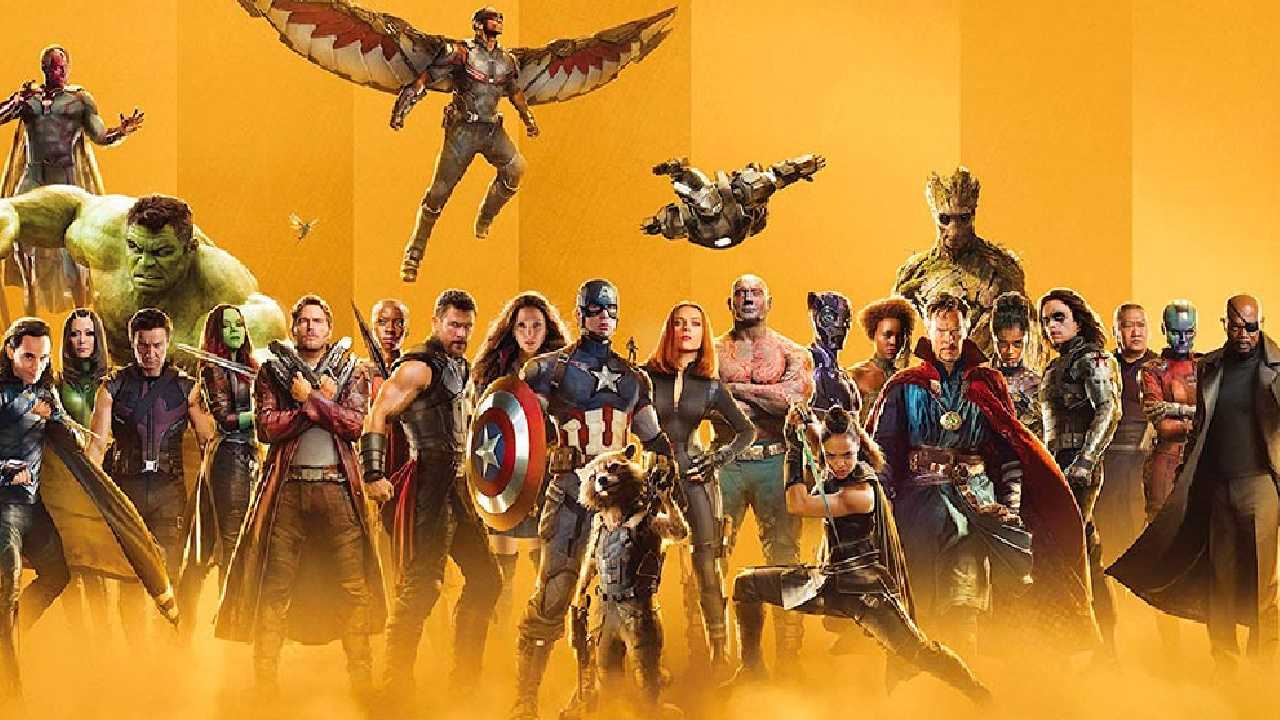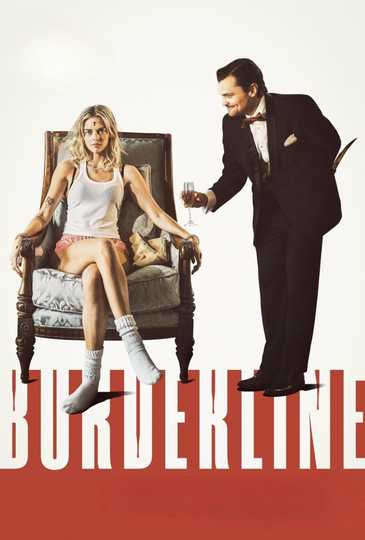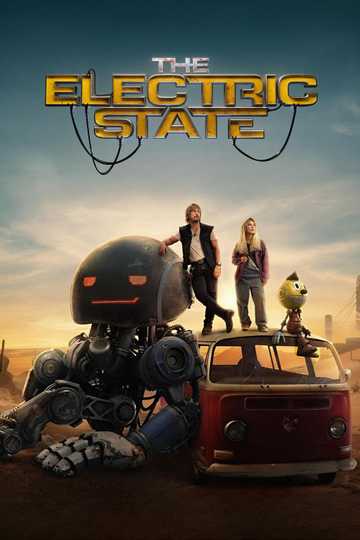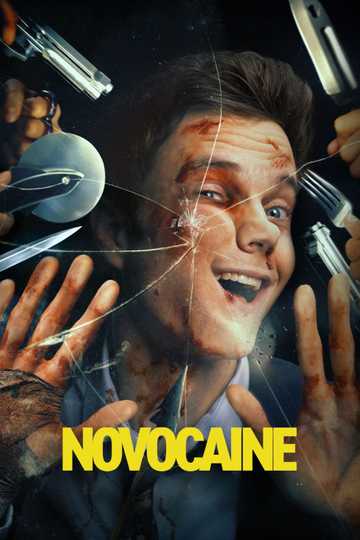How 'Singin' in the Rain' Still Makes a Splash, 65 Years Later
Sixty-five years later, "Singin' in the Rain" can still draw a crowd.
In fact, hundreds of fans recently descended on a Culver City park to take in an outdoor screening under a full moon, just two miles from the very soundstages where the classic 1952 musical starring, co-directed and choreographed by the legendary Gene Kelly was filmed.
Street Food Cinema -- which regularly stages outdoor screenings of beloved films accompanied by fleets of food trucks, musical entertainment and celebrity guests in Los Angeles, San Diego and Phoenix (as well as its first ever camp-out screening of "Dirty Dancing" in Malibu July 15) -- brought "Singin' In the Rain" home in style, as Kelly's widow, biographer and archivist Patricia Ward Kelly appeared before the crowd to share the inside details of the making of her husband's masterwork with an appreciative audience of devotees and new viewers alike.
Prior to the screening, Patricia joined Moviefone to reflect on the enduring popularity of the film that's widely considered to be the greatest movie musical ever made, as well as a few delicious anecdotes about how the cast and creators of the contemporary musical smash "La La Land" dropped by to derive inspiration from the dance legend's archives -- and paid a sly tribute to their host on screen.
Moviefone: Let's talk about these nights like tonight. To be able to share this movie again and again with crowds, and see how perennial it remains, for you and Gene's legacy, what does that mean to you to be able to come out and still be part of this cinema family?
Patricia Ward Kelly: It's remarkable. He died 21 years ago, but it's still relevant, and still cool, 65 years later. For the 60th anniversary, I traveled around the U.S. with Rita Moreno, and people kept asking her, "Why do people want to see this film?" She said, "Because it's a perfect musical." It has wit, the script is so wonderfully ahead of its time, in a sense, and so current, so you don't cringe and think, "Oh, that's very dated."
And the filming is way ahead of its time. Gene always said to me, "The hardest thing to do is to create something that is both contemporary and timeless." I think "Singin' in the Rain" is one of the best examples of something that is. He used to say, "I'd love to come back and see what people are watching 100 years later." It's 65 and going strong. I've introduced this this year in Sweden, Luxembourg, Toronto, San Diego. The crowds just keep coming and turning out. No diminishment.
He made great movies before this one. He made great movies after this one. What sense do you have of why "Singin' In the Rain" was particularly special to him?
It's interesting why it's special to everybody, in a sense, because as Gene said, the grand irony is that everyone thought that "An American in Paris" was going to be the Cine Qua Non of movie musicals. They said, at the time, "Singin' in the Rain" was a very deep second. Gene told me that it was only [co-screenwriter] Adolph Green who really thought "Singin' in the Rain" was going to be the picture, and ultimately it has, I think, surpassed the others.
It's hard to know why. Gene had a fondness for a lot of the others, but the public latched on to this one. I think that iconic opening, those bars of music that [composer] Roger Edens actually gave. Those aren't in the original, and Gene needed a way to get into the movie. It was Roger Edens who came up with that vamp. You hear that around the world and you know exactly what it is. There are not too many things like that – I think a Beatles song, probably if you hear the opening bars, probably "Somewhere Over the Rainbow," "Singin' in the Rain," are things that you just hear and you know immediately what it is.
I think too, Gene said the whole point of it is to bring joy. I think that that is a universal language around the world, and that it just continues. I think right now everybody's really looking for that.
Another nice reason to revisit this movie is to remember Debbie Reynolds. What's it been like for you in the wake of her passing to see people responding to her performance as you show this film around?
It's so funny, when you see her, especially in the car when they first meet, and the looks she gives him and everything. I think what's interesting is that Gene said, "She really wasn't even acting." It was really that this was just kind of like almost as though it had been written for her.
You are, at this point, a scholar of Gene Kelly and his work. If you wanted to point something out in this movie for somebody who's seeing it maybe the second time, or seeing it maybe for the 100th time, say, "Take an extra little glance at this thing..."
There are so many different things. The more I see it, the more I see little things that I didn't notice before. You watch the overall, but it's when you've seen it so many times and you being to notice nuances and things.
For example, when Gene and Jean Hagen first arrived and they're on the red carpet, and he's such a hokey bum. He's just smiling and doing his whole thing -- and she is so extraordinary. Jean Hagen, Gene said, was the glue that held the picture together. She was nominated for an Academy Award, and she lost to Gloria Grahame. She really is extraordinary. Your eyes are on those two, but if you look over at Donald [O'Connor], he's got a great look where he just rolls his eyes. You don't pay attention to him, but if you've watched it so many times, you do see him.
And the same thing, if you watch Donald when they're doing "Moses Supposes," it was actually his widow that said this to me when we did a screening: she said, "Watch Donald looking over at Gene," and he does just cast over to him. And for dancers to notice, they both turn left, which is very unusual. And fortunately, they both did naturally turn left. It would have been quite complicated to try to do it the other way around.
There's so much mythology about the making of the film. I find myself constantly kind of stomping out the myths of "milk in the [rain] water" [to make it photograph better], because there is none. It's just phenomenal cinematography and lighting, and very, very difficult to do. So to say that it was accomplished by adding milk [is inaccurate] – I hear that's on a lot of tourist rides! And also the bloody feet stories and things. The production records are here at USC, and give you a minute-by-minute account.
The stories are fantastic, and funny, and everything, but not very true, most of them. Gene was actually spot-on. I think partly because he's directing, choreographing, and starring in the movie, so he had to watch the budget, the schedule, the time, the rehearsal, everything essentially.
What's been fun in the last several months to see that there's a spiritual kinship between "Singin' In the Rain" and "La La Land." They're in the same genre, they're both a Hollywood love story, though the dancing isn't as spectacular -- by design -- in "La La Land." People kept turning to "Singin' in the Rain" after they'd seen "La La Land" that had maybe never seen it before. Tell me about watching that phenomenon unfold.
Damien Chazelle is a good friend of mine. I met him at the French residence here. He said to me, I gave him my card, and he said, "Oh my gosh, Gene Kelly's my hero!" He said, "I'm working on this little dance picture." I said, "Gee, I have Gene's archives, so if you'd ever like to come over and take a peek, just let me know." It was right in the middle of the big hooh-haha with "Whiplash," all the Oscar stuff. So he just went wild with all of that.
So I didn't hear, and I thought, "Well, maybe he's moved on to something else or something." Pretty soon I got an email message from him, he said, "Does your offer still stand?" And I said, "Absolutely. Just let me know when you're free." Then he wrote back and he said, "Do you mind if I bring some other people?" And I said no, and he said,"Can Ryan Gosling come?" I was like, "No! No, definitely not that.' [Laughs] Then he said, "How about Emma Stone?" Then he came back again and said, "Can Mandy Moore, the choreographer, come?"
So they all came for dinner. Ryan actually brought a 25-pound apple pie as a hostess gift, and a quart of ice cream. It was a fantastic gift, because one will never forget that. It actually makes a little appearance in the movie. I get a little nod! When he opens the oven after cooking dinner for Emma, it's the apple pie.
They poured through the archives and the manuscripts, Gene's choreography for "Singin' in the Rain." They were quite cute because I would leave the room to make dinner, and when I was in there, they were very serious and straight. I heard afterward that whenever I'd leave the room, they would be like, as Ryan said, "geeking out with everything." And he referenced it in all the interviews he did. BBC and everything, he said that seeing Gene's handwritten writing about being on the lamppost, stuck in his mind, and then infused what he did.
So we talked a lot about the thing that was most important to Gene, which was the use of the camera. How you use the camera to capture dance on film, which is so much different than choreographing for the stage. Mandy Moore was very sensitive to that, and Linus [Sandgren], the cinematographer was. Because I said to him, "You're going to shoot head on and full figure, right? You're not going to do this crazy body part chopped up." And they said no, so I really love them, and I love what they did.
Gene always said, "Don't imitate what I did. Take what I did, and make it your own and go beyond." So I really commend them for that. It's an expensive business to make a musical, and to get Lionsgate to get behind them and put the kind of money behind it. It allows, I hope, will open the doors for more people to create original works, instead of just regurgitating something that's already been done, which isn't the kind of risk that this was.
So I'm the big "La La Land" champion, and I can't wait to see what other work they all do. They've all been respectful and gracious about Gene, and you're absolutely right. I introduced it at the Hollywood Bowl with the symphony, and I got so much mail from people saying, oh my gosh, after you introduced, I went home and rented Gene's movie. So bingo. What more can anyone ask for?
This movie's legacy will take care of itself, I think, at this point. What are some of the other things that are in the works to celebrate Gene's other works or keep his story alive in the public mind?
I have my one-woman show that's been traveling for five years. "Gene Kelly The Legacy." Actually will be at the Wallis [Annenberg Center for the Performing Arts in Beverly Hills]. It's coming back. It was there in 2015, and they put it in their 2018 season. I just returned. I just did that in Luxembourg, Sweden, Toronto, and it'll go to Coronado Island Film Festival in the fall. It just keeps going!
Then I've created a brand new symphonic cinema tribute to Gene. "Gene Kelly, A Life in Music," that is launching next year. That's a big live orchestra with the clips. Which a lot of the people are doing now with the full films and everything. But this gives you a sense of the breadth of Gene's work. My whole bit about him is, you always think about dance with Gene, but I think about music, because it was really what made him, in a sense, and inspired him. And so I wanted to shine a light, not only on Gene's work, but also on Gershwin and Cole Porter and Henry Mancini, and on the arrangers, the Saul Chaplins and Roger Edens, and on the musicians, the people like Uan Rasey who does the great trumpet riff in "Singin' In the Rain." It'll be a different way of looking at him, and will be a big global thing, so watch for that.
I'm finishing the book about Gene, the memoir, and then with the archives, I've decided to create a kind of virtual collection that will be available to people around the world, ultimately, in perpetuity when I kick the bucket. I want to curate it, but I want to use Gene's voice to basically take people on this journey, and talk about himself, and reveal things. I wanted to have different ways that people can come into it. So, say, a young kid, a boy or girl who loves baseball but hates dancing, can hear Gene talk about the connection between ballet and classical dance, and classical dance and baseball, and can hear about the connection between mathematics and dance.
I want that to be a very full thing. Because if you put it one place, then the world can't access it. One thing that I've noticed with people seeing the archives -- I just had the whole cast of "Jersey Boys" over, I had the cast of "Bullets Over Broadway," and ABT and the whole Australian Ballet, 80 people came -- there's something about seeing the materials for these young kids. To be able to see Gene's handwriting, and to see the shoes that he wore, and the roller skates from "Xanadu," and the photographs of him behind the scenes. Something happens. I want to try to create that for everyone forever, as best as I can.
Just on a personal memory note, when you got to see Gene spending time with Donald, Debbie, Rita, Stanley Donen or Betty Comden and Adolph Green, the people who were involved in making this movie, what were the fun things that you got to observe with this group years later kind of being together again?
Certainly, Gene and I went to dinner with Donald and his wife, and the tremendous amount of affection and respect, mutual admiration. And you see it on the screen with the two of them, the chemistry between the two. I would love to have met Jean Hagen, but she died too young.
Rita I didn't see with Gene, but was hilarious, really funny. She came to the set, even though she has a very small role as Zelda, she said she came every day to watch the filming, because she'd never seen anything like it. She said, "Gene was in constant motion," that he was behind the camera, then he would jump in front of the camera, then back behind the camera, then in front of the camera.
I think people forget about that. They forget, because they see him on the screen, but they don't realize he's up on the boom, and he's checking the shots, and checking the lighting, and then got dance and performing, and then he goes and changes into costume and does it. It was very interesting to hear her kind of validating what I knew Gene had done for it.
She's really the only one we've got left. She's such a firecracker. She just couldn't believe that I didn't know who Gene Kelly was when I met him. She just made something of that wherever we went. She just couldn't believe that I had fallen off this truck and didn't have any idea who Gene Kelly was.
I do think, still, that was the best way to meet him because he was a blank slate. I was lucky that he gave me over ten years of interviews almost every day to fill in that slate. It's really fun now, in hindsight, as much as I miss him. I was just going through photographs today and files. It's just an extraordinary collection. Basically, the history of the 20th century. The breadth of this man is so extraordinary. People dropping by the set for "Singin' in the Rain," the letters, the telegrams people sent for him. He's gone, but there is this remarkable record for people. You'll see more of that.
